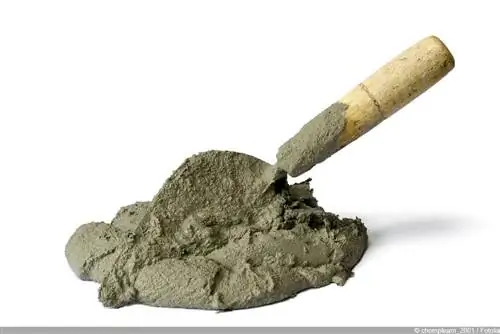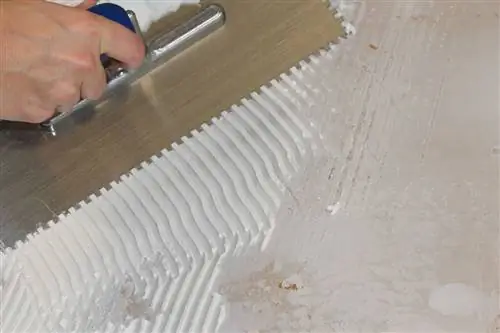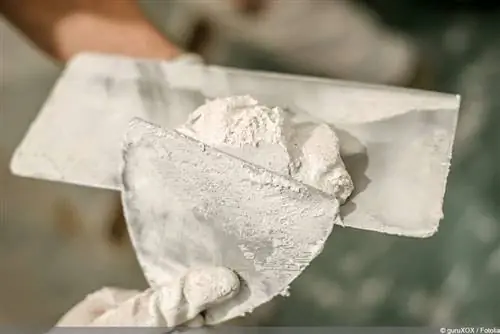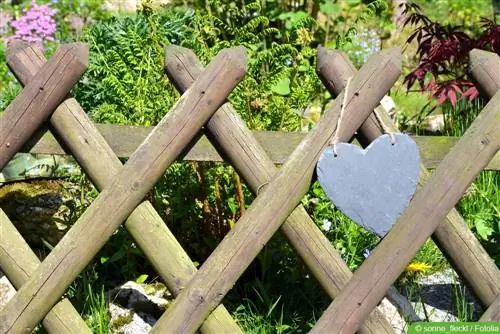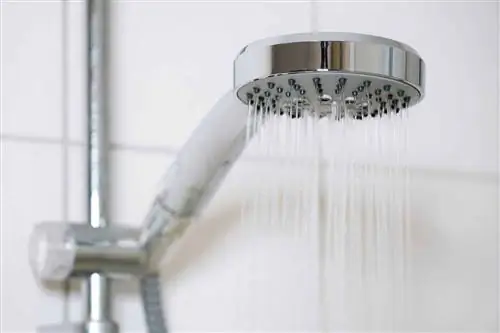- Author admin [email protected].
- Public 2023-12-17 03:39.
- Last modified 2025-01-24 12:45.
Tile walls and floors are practical and easy to clean as a simple wipe is enough. They are therefore the first choice in households with animals or children but also in rooms with high humidity. But how much tile adhesive is needed per square meter?
Factors
Various factors must be taken into account when calculating requirements. These are:
- Size of the tiles or edge length
- Type and thickness of material
- Method of gluing
- Type of use of the area
The larger and thicker the tiles, the more glue is required for attachment. More should also be used for natural stones. If a floor is subjected to a lot of wear and tear, for example due to frequent foot traffic, high humidity, strong cleaning agents or weather, larger amounts of mortar are required than in a private bathroom, living room or kitchen. The combined method for attaching the tiles should therefore also be used in a pool or on the terrace.
Methods
When laying tiles with tile adhesive or thin-bed mortar, there are primarily two different methods. These are the so-called floating and buttering. With floating, the subsurface is provided with mortar. Buttering involves applying the tile adhesive directly to the back of the tiles and allowing them to align when attached to the wall or floor. Buttering is a good choice, especially for natural stone. A combination of both methods is also possible in order to create a particularly high level of hold. Depending on which method is chosen, the amount of mortar required per square meter must also be calculated.
Floating
When doing so-called floating, you must first make sure that the surface is completely flat. This process cannot compensate for uneven walls and floors. The mortar is mixed and first applied smoothly and evenly to the floor. A toothed comb is then run over it to form grooves. Depending on the size of the tiles, the teeth of the comb must also be different. the longer the edge length, the thicker the mortar layer must be and the longer the teeth must be in order to create grooves down to the substrate.
The resulting consumption is approximately:
- Up to an edge length of five centimeters, a tooth depth of three millimeters is required, which results in 1500 grams of mortar per square meter
- between 5.1 cm and 10.8 cm edge length, a tooth depth of four millimeters should be used, which results in 2000 grams of mortar per square meter
- an edge length of 10.8 cm to 20 cm, a tooth depth of six millimeters makes sense, the mortar consumption is around 3000 grams per square meter
- With an edge length of 20.1 cm to 25 cm, a tooth depth of eight millimeters is required, which results in around 3300 grams of mortar per square meter
- If the tiles have an edge length of 25 to 50 cm, a tooth depth of one centimeter and a quantity of mortar of around 3700 grams per square meter are required
Buttering
When buttering, the mortar is not placed on the surface, but rather applied directly to the back of the tiles. The advantage here is that the tiles can be installed individually and are easier to move to achieve the desired orientation. This makes it possible to tile larger areas as well as to attach individual decorative tiles.
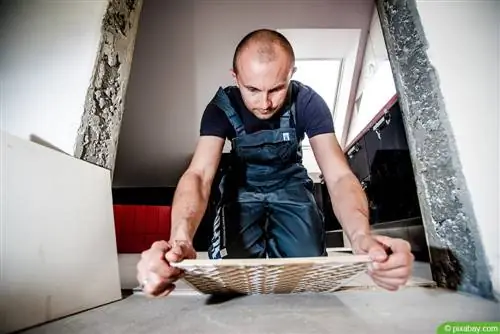
Twice the amount of tile adhesive should be used per square meter compared to the floating method. With an edge length of up to five centimeters, this means that a quantity of mortar of around three kilograms is required.
Combined procedure
The combined process of floating and buttering always makes sense when the floor or wall is exposed to particular stress. This is the case, for example, when it comes to tiles on the terrace or generally outdoors. This method should also be used when tiling pools in order to achieve a particularly high level of hold.
Here, the thin-bed mortar is first distributed on the relevant surface and structured with a toothed comb. The next step is to coat the back of the tiles thickly with tile adhesive. Due to the thick layer, the tiles can be easily aligned during installation and the position can be corrected very easily.
What type of tile?
When it comes to tiles, you shouldn't just pay attention to the look; other factors should also be taken into account. These include:
- Art
- Size
- Weight
- Surface
Natural stone should be attached using buttering or the combined method. This also applies to very large or heavy tiles. The surface obviously plays an important role visually. However, it also has the greatest impact on the cleaning effort. Reflective tiles in particular quickly look dirty and therefore need to be cleaned more often.
Note:
Smaller tiles are often preferred because less mortar needs to be used. However, the installation is more complex and more joint compound is required.

